| Der Verschenkte Leutnant | |
|---|---|
| Directed by | Wolfgang Luderer |
Release date |
|
| Country | East Germany |
| Language | German |
Der Verschenkte Leutnant is an East German film. It was released in 1955.
| Der Verschenkte Leutnant | |
|---|---|
| Directed by | Wolfgang Luderer |
Release date |
|
| Country | East Germany |
| Language | German |
Der Verschenkte Leutnant is an East German film. It was released in 1955.
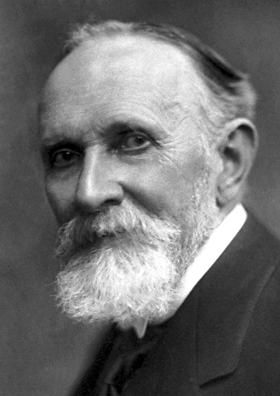
Carl Friedrich Georg Spitteler was a Swiss poet who was awarded the Nobel Prize for Literature in 1919 "in special appreciation of his epic Olympian Spring". His work includes both pessimistic and heroic poems.
Leutnant is the lowest Junior officer rank in the armed forces of Germany (Bundeswehr), the Austrian Armed Forces, and the military of Switzerland.

The Battle of Teugen-Hausen or the Battle of Thann was an engagement that occurred during the War of the Fifth Coalition, part of the Napoleonic Wars. The battle was fought on 19 April 1809 between the French III Corps led by Marshal Louis-Nicolas Davout and the Austrian III Armeekorps commanded by Prince Friedrich Franz Xaver of Hohenzollern-Hechingen. The French won a hard-fought victory over their opponents when the Austrians withdrew that evening. The site of the battle is a wooded height approximately halfway between the villages of Teugn and Hausen in Lower Bavaria, part of modern-day Germany.

Gustav Friedrich Fröhlich was a German actor and film director. He landed secondary roles in a number of films and plays before landing his breakthrough role of Freder Fredersen in Fritz Lang's 1927 film Metropolis. He remained a popular film star in Germany until the 1950s.

The Battle of Würzburg was fought on 3 September 1796 between an army of the Habsburg monarchy led by Archduke Charles, Duke of Teschen and an army of the First French Republic led by Jean-Baptiste Jourdan. The French attacked the archduke's forces, but they were resisted until the arrival of reinforcements decided the engagement in favor of the Austrians. The French retreated west toward the Rhine River. The action occurred during the War of the First Coalition, part of the French Revolutionary Wars. Würzburg is 95 kilometres (59 mi) southeast of Frankfurt.
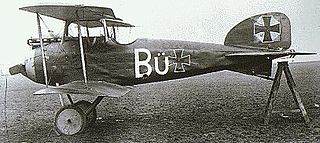
Jasta 2 was one of the best-known German Luftstreitkräfte Squadrons in World War I. Its first commanding officer was the great aerial tactician Oswald Boelcke, and it was the incubator of several notable aviation careers.

Kurt Meisel was an Austrian actor and film director. He appeared in 65 films between 1934 and 1994. He also directed 21 films between 1949 and 1984. Meisel was married to the actress Ursula Lingen. He was born and died in Vienna, Austria, and is buried on the Vienna Zentralfriedhof.
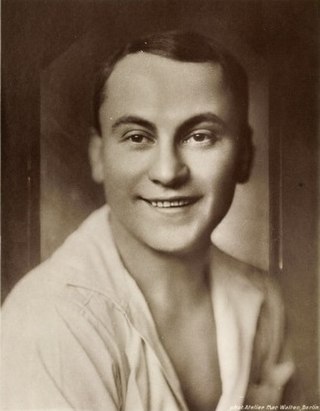
Kurt Vespermann was a German stage and film actor.
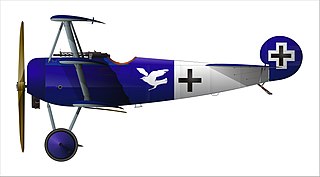
Royal Prussian Jagdstaffel 15, commonly abbreviated to Jasta 15, was a "hunting group" of the Luftstreitkräfte, the air arm of the Imperial German Army during World War I. The unit would score over 150 aerial victories during the war, at the expense of seven killed in action, two killed in flying accidents, three wounded in action, one injured in a flying accident, and two taken prisoner of war.
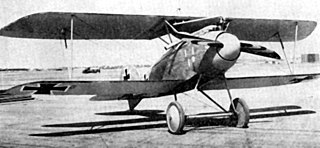
Royal Prussian Jagdstaffel 4, commonly abbreviated to Jasta 4, was a "hunting group" of the Luftstreitkräfte, the air arm of the Imperial German Army during World War I. The unit would score 192 confirmed victories; in turn, it would suffer 11 killed in action, 9 wounded in action, and two taken prisoner of war. It was one of the units in the famed Flying Circus.

The Battle of Graz took place on 24–26 June 1809 between an Austrian corps commanded by Ignaz Gyulai and a French division led by Jean-Baptiste Broussier. The French were soon reinforced by a corps under Auguste Marmont. The battle is considered a French victory though Gyulai was successful in getting supplies to the Austrian garrison of Graz before the two French forces drove him away from the city. Graz, Austria is located 145 kilometers south-southwest of Vienna at the intersection of the modern A2 and A9 highways.
Lieutenant field marshal, also frequently historically field marshal lieutenant, was a senior army rank in certain European armies of the 17th to 20th centuries. It emerged as the rank of field marshal came to be used for the highest army commander in the 17th century. In German-speaking countries the commander-in-chief usually appointed an "under marshal" or "lieutenant field marshal" to support and represent the field marshal. Amongst his functions as the personal deputy to the field marshal, were the supervision of supply depots and routes, and inspection of the guards.
The following units and commanders took part in the Battle of Königgrätz on July 3, 1866. Compiled from the Prussian Army's Official History of the war.
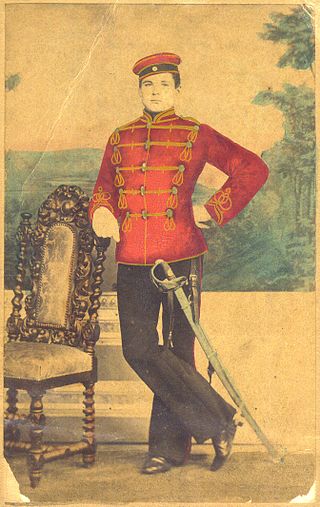
Unterleutnant was an officer of the armies of East Germany and other nations. The rank was first introduced in 1662-74 by France and was also adopted by some other countries' armed forces. In the East German National People's Army from 1956 to 1990, Unterleutnant was the lowest commissioned officer (CO) rank. It belonged to the rank group of lieutenants or subaltern officers. The equivalent rank of the Volksmarine was Unterleutnant zur See.

Comrades at Sea is a 1938 German war film directed by Heinz Paul and starring Theodor Loos, Carola Höhn and Julius Brandt. It was shot at the Marienfelde Studios of Terra Film in Berlin and on location around Kiel and Flensburg in Schleswig-Holstein. The film's sets were designed by the art directors Heinrich Richter and Gabriel Pellon. The film is set during the Spanish Civil War, which it portrays as a Communist uprising against the lawful government.

Duty Is Duty is a 1931 German comedy film directed by Carl Boese and starring Fritz Spira, Ralph Arthur Roberts, and Maly Delschaft.
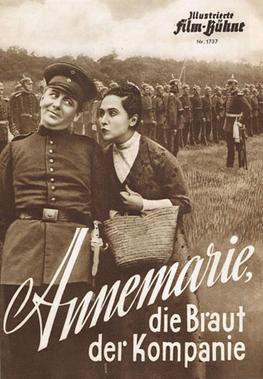
Annemarie, the Bride of the Company is a 1932 German comedy film directed by Carl Boese and starring Lucie Englisch, Paul Heidemann and Albert Paulig. It was shot at the Babelsberg Studios in Berlin. The film's sets were designed by the art director Willi Herrmann.
The Pride of the Company is a 1926 German silent comedy film directed by Georg Jacoby and starring Reinhold Schünzel, Georg H. Schnell and Camilla Spira.

Terror of the Garrison is a 1931 German comedy film directed by Carl Boese and starring Felix Bressart, Lucie Englisch and Adele Sandrock.